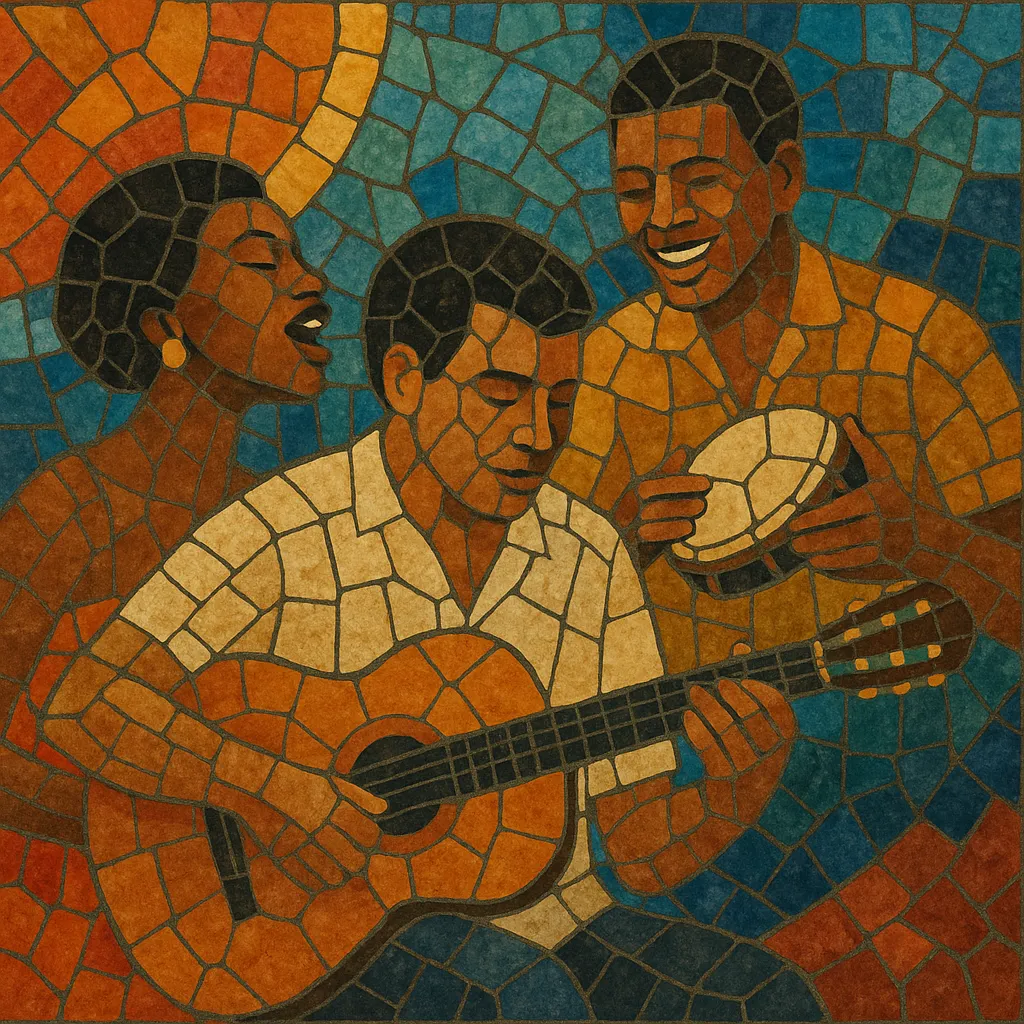Samba-joia (often written in Brazil as “sambão-joia”) is a polished, radio-friendly branch of samba that emerged in the early-to-mid 1970s.
It keeps the characteristic samba groove but wraps it in lush orchestral arrangements, soft background vocals, and pop‑soul production values aimed at mass audiences and television variety shows.
Compared to rootsier samba styles, samba-joia favors romantic themes, singable choruses, and a smooth, elegant studio sheen, connecting samba with easy listening, MPB, and contemporary soul aesthetics.
The result is a feel-good, danceable sound that remains unmistakably Brazilian while being accessible to mainstream pop listeners.
Samba-joia took shape in Brazil during the early-to-mid 1970s, a period when television, large festivals, and variety shows helped define mainstream taste. Record labels and TV orchestras favored polished productions, and samba artists began recording with string sections, brass, background choirs, and a steady drum‑kit/electric‑bass foundation. The term “sambão‑joia” was used by critics to describe this glamorous, crowd‑pleasing approach that blended samba’s rhythmic engine with pop and easy-listening gloss.
While keeping the samba pulse, the style absorbed elements from MPB, bossa nova’s studio sophistication, American soul, and easy listening. Songs typically emphasized romance, positivity, and memorable hooks, aligning with radio formats and telenovela soundtracks. This made samba-joia a gateway for broader audiences who might not engage with the more traditional rodas or partido‑alto settings.
By the late 1970s and 1980s, samba-joia’s commercial blueprint—romantic lyrics, smooth arrangements, and catchy refrains—fed directly into the rise of pagode and especially pagode romântico. Its TV‑ready aesthetics and emphasis on melody also informed later Brazilian pop acts who drew on samba grooves while prioritizing mainstream production values.
Start with a medium-tempo samba pulse (in 2/4) anchored by surdo, pandeiro, and a steady drum kit. Keep the bass line clear and supportive, outlining the harmony while reinforcing the characteristic off-beat swing that invites dancing.
Use diatonic, song-friendly progressions with tasteful extensions (maj7, 9ths) and occasional modulations to lift the chorus. Write melodies that are lyrical and memorable, aiming for singalong refrains that can carry romantic or sentimental lyrics.
Blend traditional samba instruments (cavaquinho, acoustic guitar, pandeiro) with pop studio tools: electric bass, drum kit, strings, brass, and background choirs. Apply smooth, glossy production—layered backing vocals, subtle percussion overdubs, and warm reverbs—to achieve a TV/radio‑ready finish.
Focus on romance, everyday feelings, optimism, and tenderness. Keep verses concise and build to a strong chorus with simple, catchy phrases. Favor a polished vocal delivery, with background vocals reinforcing hooks and call‑and‑response moments.
Prioritize clarity, balance, and lushness. Strings should sweeten the harmony without overwhelming the groove, and horns should punctuate transitions and choruses. The overall sound should feel elegant, uplifting, and immediately accessible.


